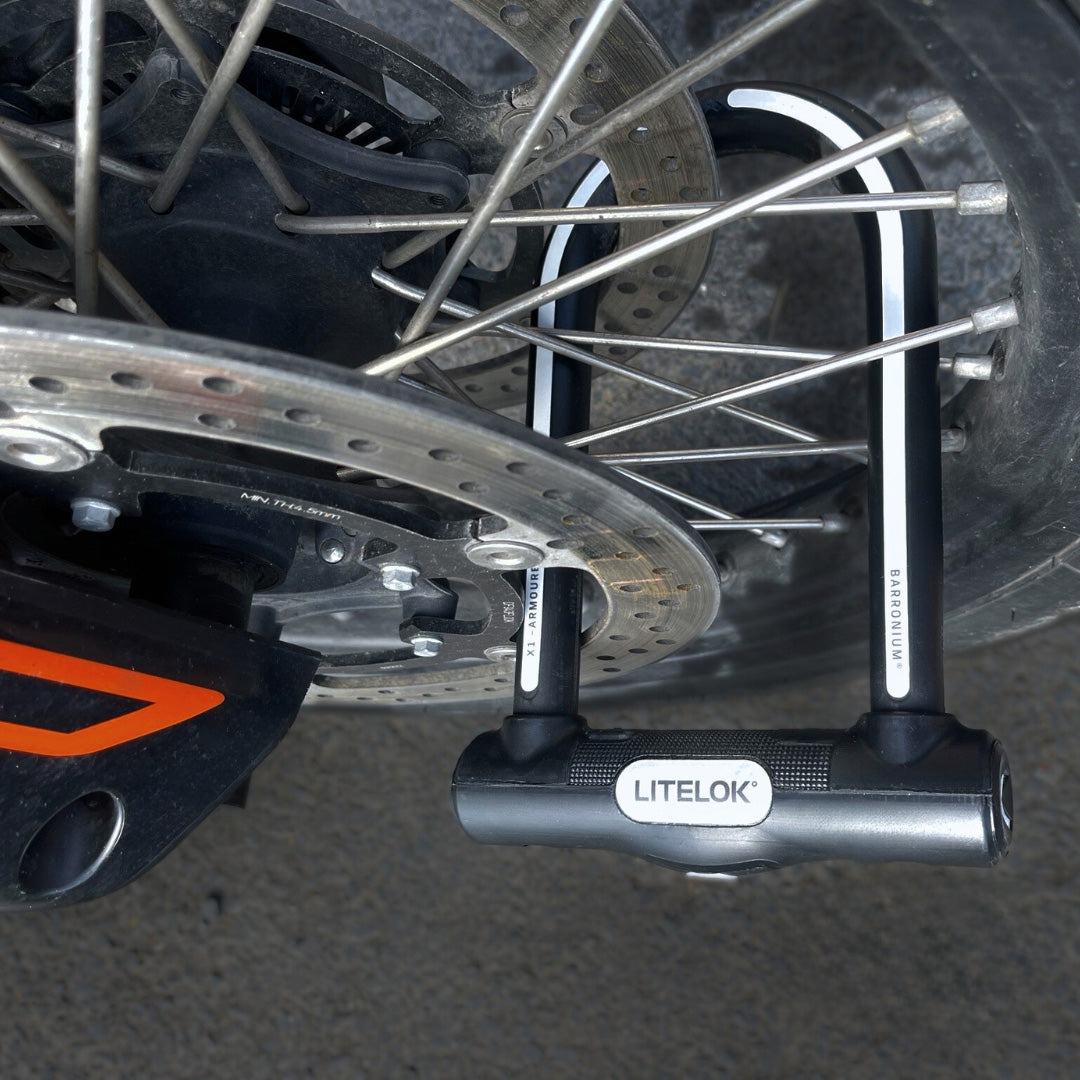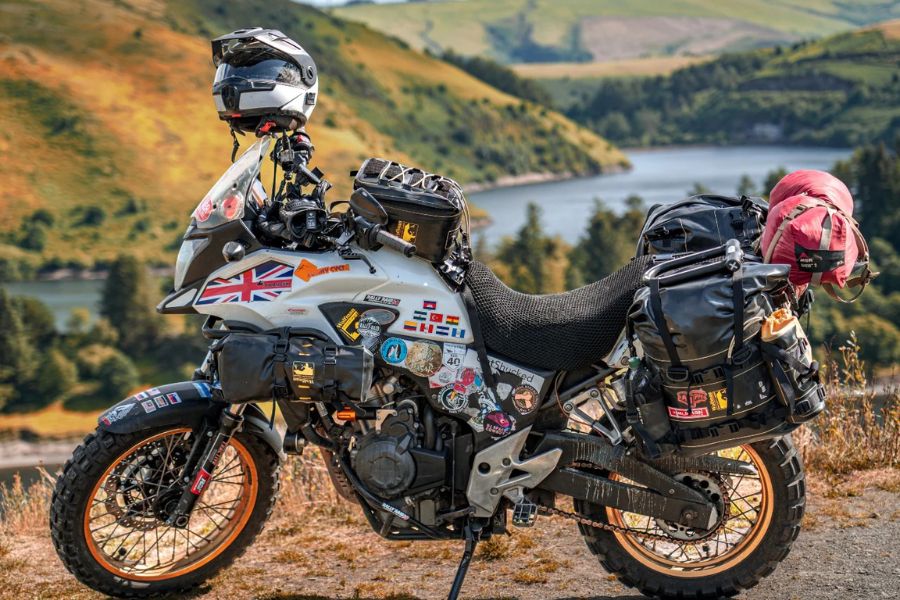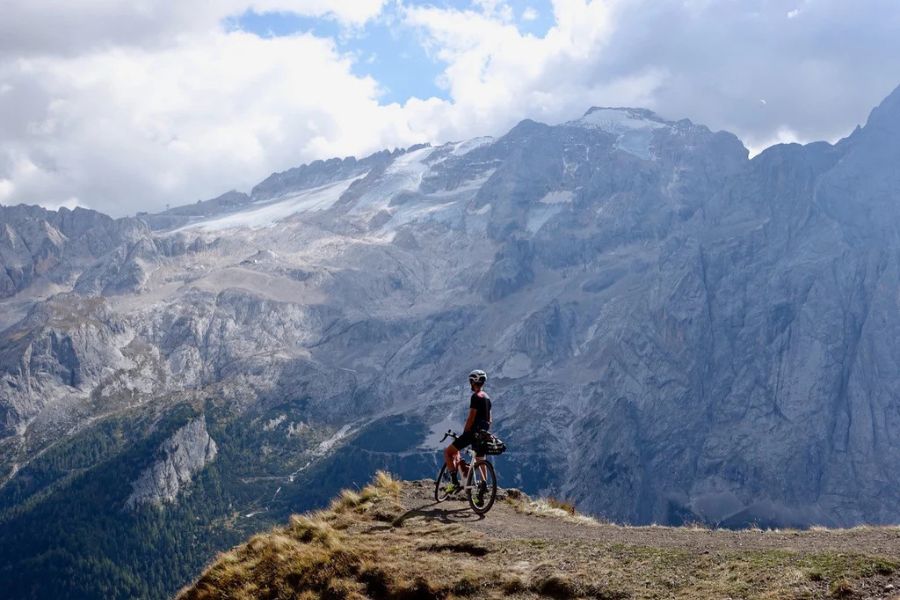When you’re planning a trip, the last thing on your mind is security. No one wants to be thinking about locks or what to do if the bike gets stolen whilst you’re away. We know because we’re the same. We may be a security company, but once booked we’re usually only thinking about the good bits of our adventures.
So what do you do? How can you keep your bike safe whilst you’re touring? You might already know a lot of this, but we wanted to share a few tried and tested ways to protect your pride and joy!
Top Tips for Motorcycle Security Whilst Travelling
When you’re travelling, you’re most likely to encounter opportunist thieves, it’s not too common to be targeted when you’re on the move. However, that doesn’t mean you should take a relaxed approach to security. At the end of the day, there’s only so much you can do to protect your bike, but why take chances? The more difficult your bike is to steal, the less appealing it will be to thieves.
We’ve taken what we know and had a chat with other riders to put together a few simple tips for protecting your motorcycle.

Lock It
Obviously, we had to lead with this one! You’d be surprised how often people leave their bikes unlocked. We understand why carrying several heavy locks can be frustrating when you’re travelling. They take up a lot of space and weigh you down. Thankfully that’s not still the case thanks to advances in technology. There are highly secure locks (like our Litelok X3) that are a lot lighter and don’t take up as much room as a chain.
As for which locks to use? You have a few options, but it will depend on your setup, something Sam Vincent, Moto Vlogger tells us about his choices “I have the Litelok Core Moto 125, which can either roll up in the lid of my top box (it holds itself there surprisingly well) or can wrap around my rear tail pack if I'm not using the box. A stark contrast to carting around my enormous, cumbersome 22mm chain! I pair that with a few cheap disc locks as an added hassle for potential thieves.”

“Overnight, I use the Core Moto around the wheel and ideally around a barrier, concrete post, or similar. If I'm away with someone, which is often the case, we park the bikes wheel to wheel, and the Litelok goes through both wheels. They can try lifting one 250kg motorcycle, but I'd like to see them lift two,” he added.
If you need to lock your helmet to your bike, another lightweight option is our GO Moto. We’d always recommend taking things with you if you’re staying in a hotel or camping but if you’re doing a short stop, the GO is ideal.
Think about Accommodation
This can be one of the most difficult parts of travelling. If you’re camping whilst touring there are separate things to consider, but if you’re staying in hotels or other accommodation, trying to find a place to stay can be a bit of a headache!
The main thing to think about is whether there will be somewhere to put your bike that’s out of sight. Certain hotels or B&Bs will advertise that they are bike friendly, so keep an eye out for that. If possible get in contact with where you’re thinking about staying to find out if they have a garage or somewhere secure you can leave your bike.

Keeping your bike hidden is key, “Out of sight, means out of mind. This is valid for parking up in the city or out camping. When you are in the city, keep it hidden as best as possible. Either down the side of hotel or hostel alleyways, alongside gardens or bushes, basically anywhere that is not easily accessible, says adventure rider and photographer, Luke Phillips.
“An additional note on this would be to be away from the road. The mode of stealing bikes is often to lift them and put them in the van. If it’s squeezed down an alleyway that took you 25mins to shimmy in, you’re going to give the would-be thieves a lot more thought on whether they fancy lifting it and dragging it out of the gap to a van,” he added.
When you’re camping keep your bike and tent out of sight where possible, and don’t tell people you don’t know your location, you can never be too careful!

Cover your Bike
Something that is often taken for granted is keeping your bike covered. You’ll hear this advice time and time again because it makes a difference. Of course, having a cover will depend on the size of your bike and how much storage you have so it’s not always possible, but if you’ve got the room to store it, bring one with you.
Make sure your cover fits over the whole bike, keeping it covered can act as a disguise to people passing by, especially if it’s a bit tatty looking. Don’t worry too much about having a pristine cover.
It might feel like something that’s not worth doing, but we recommend it, as do other riders like Luke, “This is something I always make sure I do. Cover the bike with anything. I use a cheap and tattered Oxford cover, but anything will do, a rotten old blanket, fancy cover, they all do the same.”

“It just prevents people from walking past and having their eye caught by a shiny new bike in the corner. It’s tried and tested, and when I’ve been away from the bike for a day or two and asked friends to check on it, they’ve always concluded the same. They didn’t realise it was my bike because it was covered, they were looking for a shiny white Honda, saw something under a sheet and just carried on looking. Seriously, it works,” he said.
Tracking Devices
More about peace of mind than anything else, a tracking device is another level of security. Each device has its own range of features so you can decide what might work best. For example, certain devices will send alerts when your bike has been moved so you can check it’s still where you left it.
Whilst there’s only so much you can do if your bike is stolen and each device will have its limits, you may be able to find your bike if it gets left close to your location. Some will even have an alarm that will trigger if your bike is moved, or that you can activate via an app - this may even be enough to save your bike from being taken.

Unfortunately, if a thief wants your bike, chances are they will go out of their way to get it. If nothing else, at least make sure you lock the wheel to prevent them from wheeling it away, something Sam does when he’s on tour, “One D-lock around your wheel could make the difference between coming back to it none-the-wiser or coming back to an expensive train ticket home and weeks of arguing with those pesky insurance companies!” he said.







Leave a comment
This site is protected by hCaptcha and the hCaptcha Privacy Policy and Terms of Service apply.